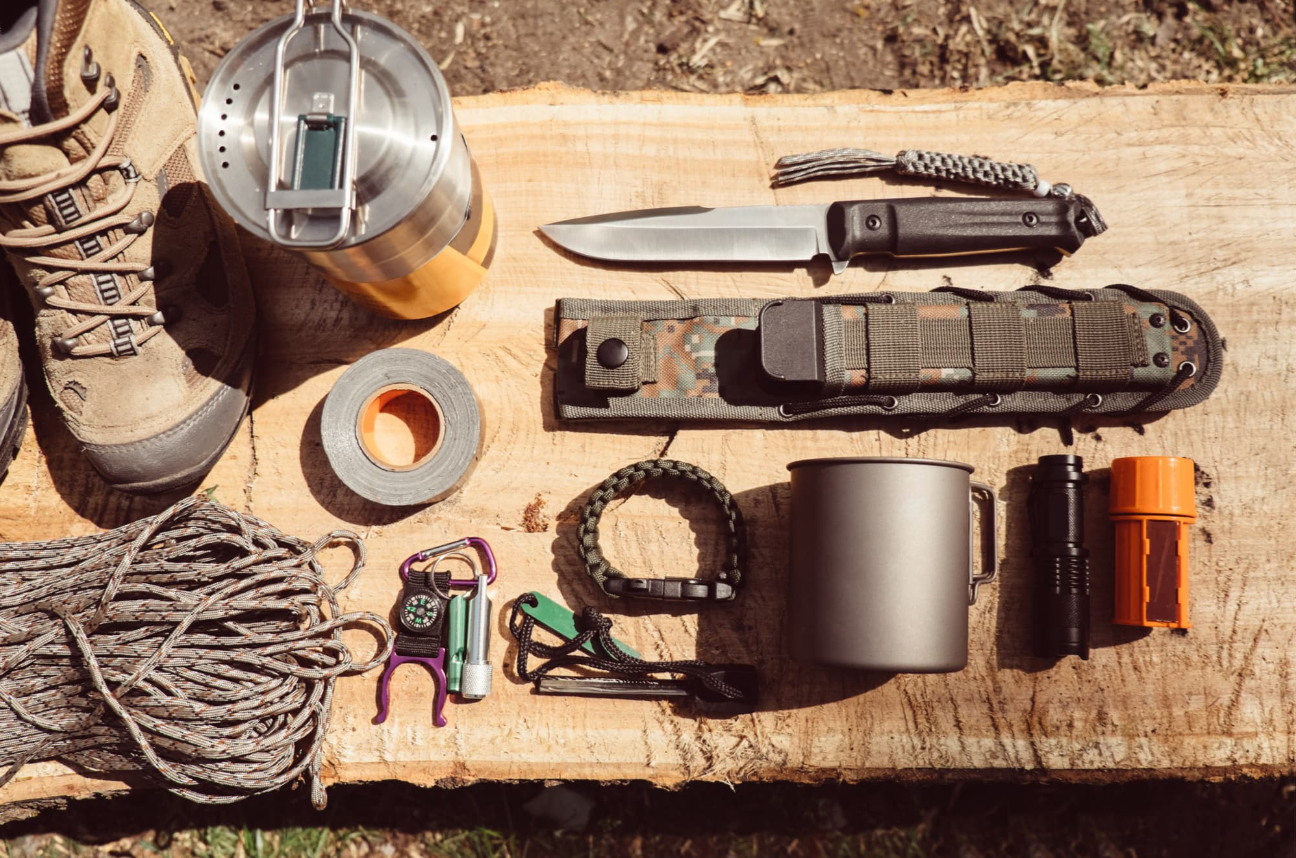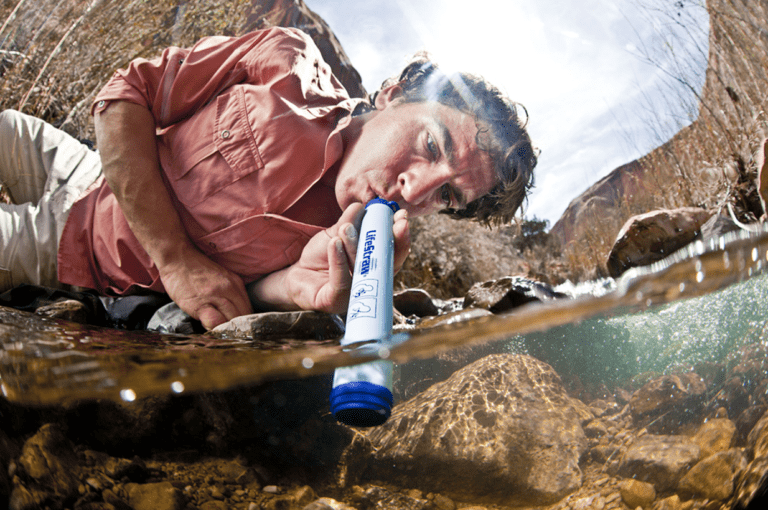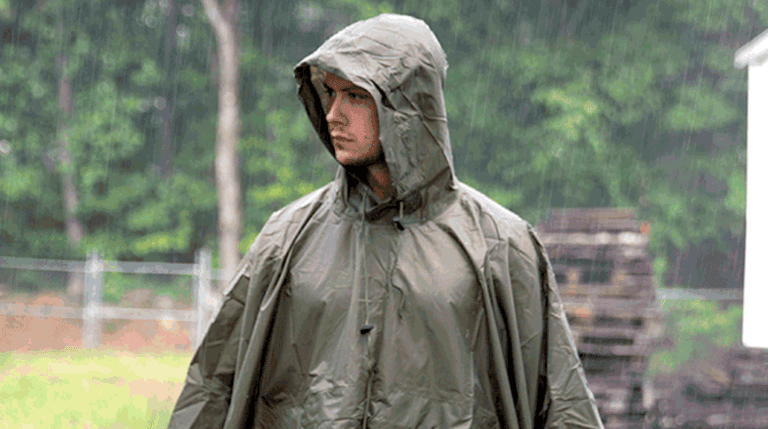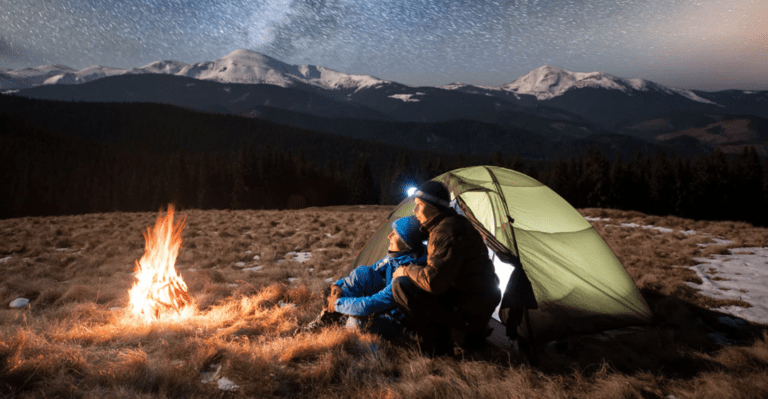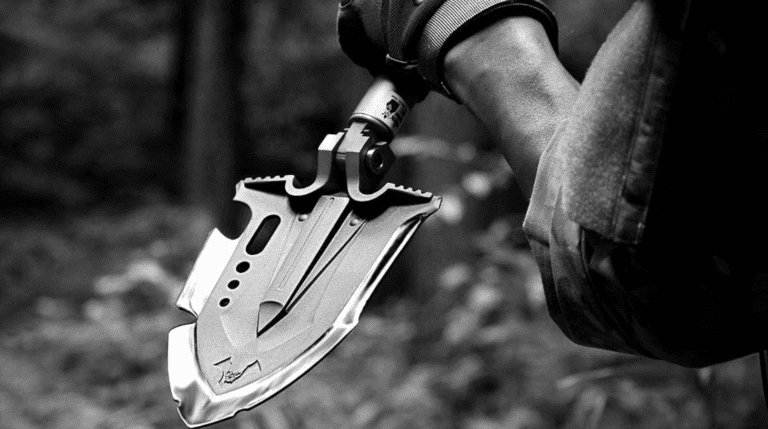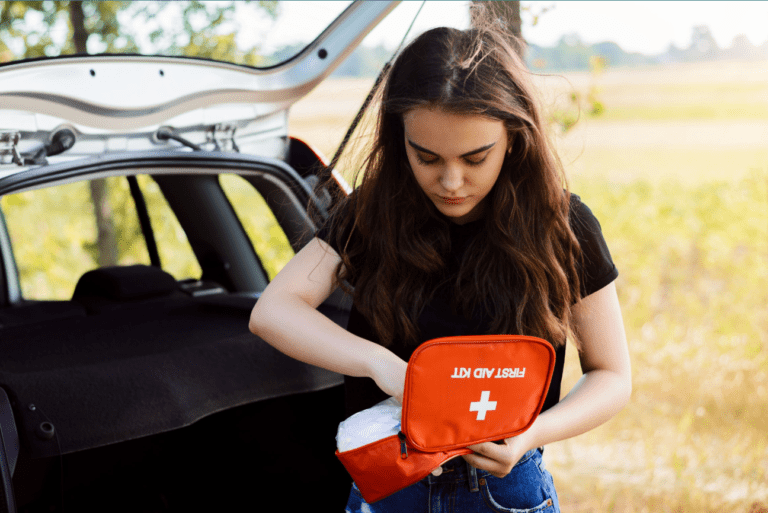Desert Survival Gear
It’s not exactly breaking news to tell you that desert environments aren’t always the most hospitable places on Earth. Just ask Mauro Prosperi.
While we don’t want you to wander off into the desert and get lost, we’d never discourage anyone from trekking a little off the beaten path and seeing everything the world has to offer.
At first glance, the topic of desert survival gear seems deceptively simple. Find water and stay out of the sun; Okay fine? Not so fast, it’s a bit more complicated. In order to properly discuss desert survival gear, we must ask ourselves a few questions. What is a desert? Why and how long will we live in the desert? And most importantly; What do we mean by desert survival? That is, what equipment will we have?
There is no way we could write a complete desert survival guide in one short article. Here we will cover some basic precautions that should be taken while trekking or backpacking in the desert.
This year alone, the media covered a number of deaths caused by desert travel around the southwestern region of the United States. All these could have been avoided by taking proper precautions.
So, what is a desert? About one-third of the world’s surface is considered a desert. Most people think of the vast sand dunes of the Sahara as seen in Hollywood movies. But a desert is defined as any dry land area that typically receives less than 10 inches (250 mm) of precipitation per year. Most of the little water it does get is quickly lost through evaporation. Average annual precipitation in the world’s deserts ranges from about 0.4 to 1 inch (10 to 25 mm) in the driest regions to 10 inches (250 mm) in semi-arid regions. Antarctica and parts of the Arctic are considered deserts, but we’re going to cover what we might call hot deserts.
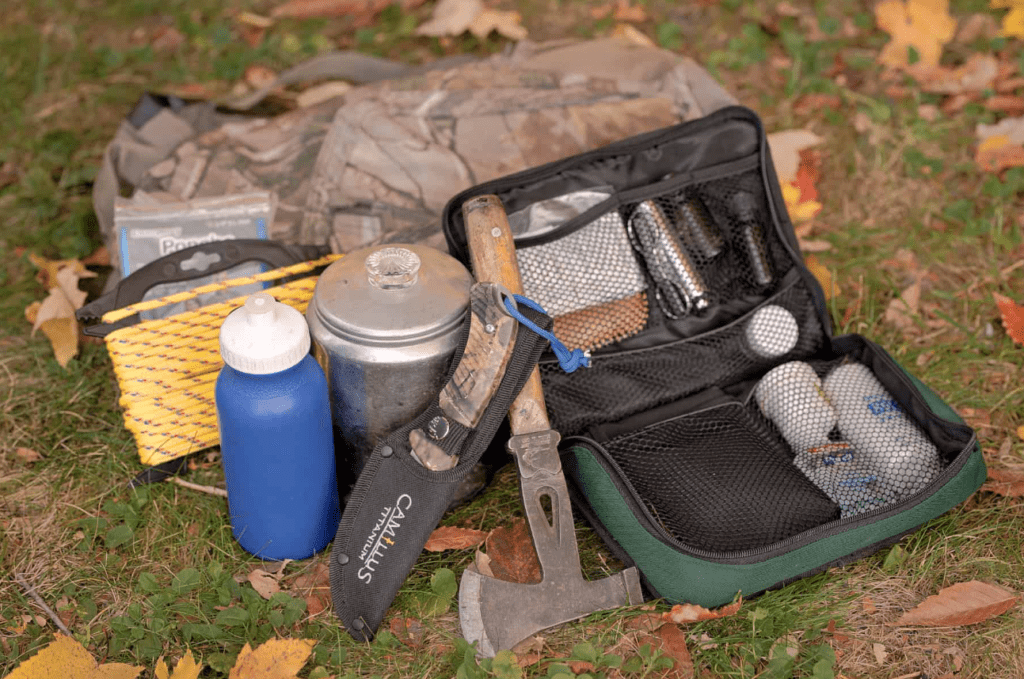
Other characteristics that mark desert systems include strong winds, low humidity, and temperatures that can fluctuate dramatically. Hot deserts often experience extreme temperature swings with very high daytime temperatures and contrastingly cold nights. Temperatures seen in the southwestern deserts can range from 120 degrees during the day to freezing temperatures at night. The same cloudless sky that allows the sun to bake our skin during the day, cools the Earth at night by rapidly dispersing heat into space. This makes the desert a difficult place to survive.
Unlike desert plants and animals, humans have not developed the highly protective mechanisms needed to truly “survive” in the desert. So, what we should tell is that we should prepare well to travel or survive in this barren area for a certain period of time. Part of this preparation should include obtaining and using appropriate protective clothing and equipment.
On the off chance that you find yourself stranded, here are some essential desert survival tips.
Planning is everything.
Don’t just wander around aimlessly or you’re more than likely to end up in the middle of nowhere. Plan when and where you are going, how you will get there and back, where you are going to stay and do it meticulously. Part of the appeal of an adventure is not planning, but the desert really isn’t a place you want to get lost.
Plan a trip
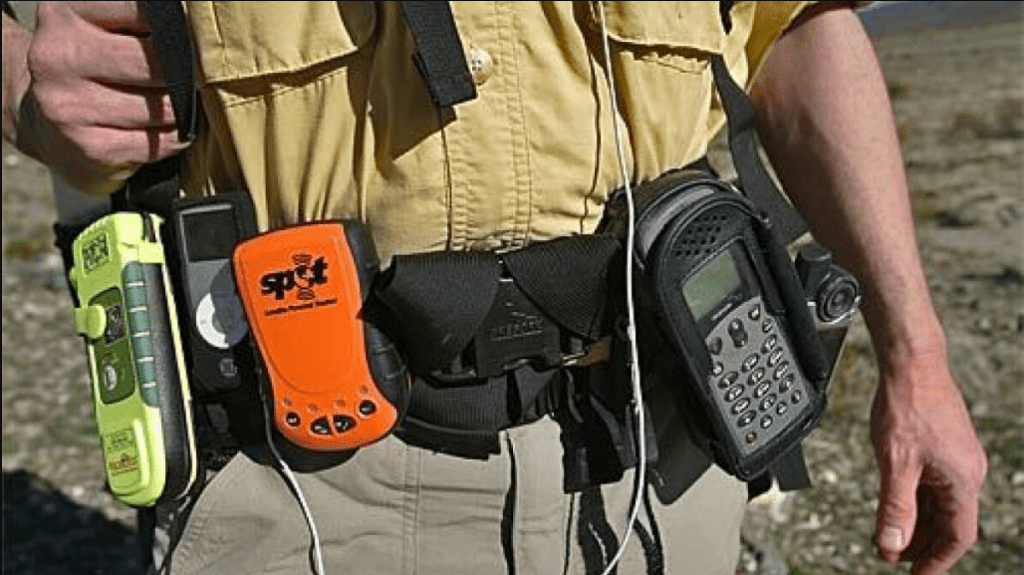
Whether you’re driving through a desert to reach your destination or planning a backpacking trip, it’s important to prepare properly. Using the Rule of Three as a guide, we know that the body can only survive three days without water under normal conditions. The desert’s high temperature and low humidity increase dehydration. Easy breathing causes fluid loss. Plan for at least one gallon per person per person, preferably two. Remember, we can make fire, we can make shelter, but not water.
Plan your route and share information with multiple people you can trust. Tell them when you plan to check in, which destinations you will be traveling through, and most importantly, when you plan to return or check in! During our recent desert trips, we shared our location on GPS coordinates below. Set times when you will check in. Stick to your plan, and take time to call your safety contacts if anything changes.
If something happens, stay on track with your plan. If you are traveling by car, stay with the car. Try to express yourself. My emergency blanket is orange on one side and reflective mylar on the other. It can be used to create a quick shelter for signaling and shade.
Take the right survival gear.
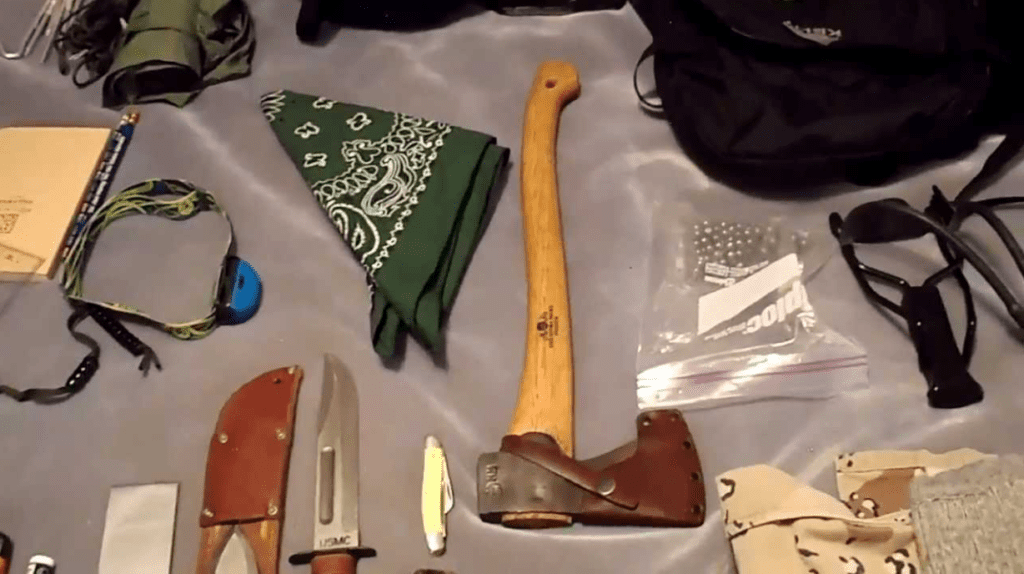
Hopefully you won’t need it, but carry some survival gear with you just in case. You will need:
- First-aid boxes
- A knife or multi-tool
- Water purification tablets
- Compass (you can’t rely on GPS in the desert)
- Some kind of scarf, bandana or dust mask in case of sandstorms
- Something to start a fire with
- Some form of light, such as a headlamp or lantern.
Tell people where you are going.
After you make your plans, make sure people know about them. Tell them where you want to be and when so they can figure out where you need to be. If you shouldn’t come, someone can start doing something about it. You won’t be able to rely on GPS or cell phone signals in the desert, so don’t assume you’ll just be able to call if you get lost.
Signaling:
Signal Mirror:
A signaling mirror like Ultimate Survival Technologies’ Star flash Mirror can be seen at surprisingly long distances. Learn how to use one properly. Don’t wait until you need it. If a signaling mirror is not available, we can break the side mirror of your vehicle, looking for something shiny like a CD. It is good practice to learn multiple ways of signaling. An indication of trouble may be 3 fires in a V shape or a pile of rocks in a triangular shape.
A signaling mirror can help save a person by seeing at great distances. As the following images show, mirror glare will be visible long after the human figure has blended into the background. If a signal mirror is not available, try using different reflective objects. (Examples: rear view mirror, side mirror, CDs, chrome plated items)
The flames
Flares can be used for signaling at night and can also be used to extinguish fires in an emergency.
Signal Fire:
Arrange materials for signal fire. In the desert, wood is sometimes scarce and very dry. It will not create a deep smoke so other items have to be added to the signal fire. Your spare tire, engine oil or bits of car interior will create a deep smoke.
Try to find shade. If no shade is available, create some. After the car cools down, we can use a reflective tarp or dig a trench under the car. Note that some critics look for the same shade.
Note: If there are elderly or infants in your group, they may be affected more quickly by temperature changes. Do whatever it takes to get them into the shade as soon as possible. Pouring water on clothes can help cool them down.
Keep covered
How to Treat Snakebites Exposure to direct sunlight in the desert won’t go away unless you do something about it. Always carry a hat to protect you from the sun, preferably a wide-brimmed hat that can provide some shade for your face and neck. If you don’t have a hat, try some kind of headgear out of any extra clothes you have. You should also wear thin gloves as these will help reduce sweat loss through evaporation.
Light-colored clothes are better at reflecting heat, although darker clothes protect against UV rays better. If possible, wear light-colored clothing that has an ultraviolet protection factor (UPF).
Of course, you should also wear sunglasses or goggles to protect your eyes from the sun.
You may be tempted to undress to keep cool, but you should keep covered.
Take plenty of water with you
Naturally, you will need some water. When running in sunlight and temperatures of 40 degrees Celsius, an average of 900 milliliters of sweat is lost every hour. Try to distribute any fluids in water carriers as much as possible to minimize leakage and store out of direct sunlight if possible.
RELATED: How to Prepare for a Winter Walk in the Snow
Pack the right foods but don’t eat them.
Well, you can eat it, but do it sparingly. The more you eat, the thirstier you’ll be, so eat only what you need to keep hunger at bay. You also need to make sure you pack the right food or you could end up doing more harm than good. Pack foods that are nutritious but don’t take up too much space.
To cure heat exhaustion, travel at night if possible.
If you must drive through the desert, try and do it at night if you can. This will reduce your chances of dehydration, and save your body about three liters of water per day.
During the day, you should try to stay in any shelter where you can stay away from the strong sun. If you don’t have a shelter, try and make a shady spot using any sticks/sticks and materials.
Be prepared for cold nights
Although desert environments are hot during the day, they can also be incredibly cold at night. So, if you can, pack some warm clothes for the dropping temperatures. Any nighttime walks will also help keep you warm.
Should you stay or should you go?
An important decision to make is whether to stay in a game or move on. If you have shelter and a water supply, it may be best to stay where you are, especially if someone knows where you are, although if you run out of water, you’ll need someone from somewhere. Will have to try to find the source.
Signal for help
If you have the necessary equipment, you can try to signal for help. A fire will send smoke into the air while using a pocket mirror can reflect sunlight to attract attention. It might sound like something out of a movie, but even spelling out ‘SOS’ or ‘HELP’ in sticks or stones beats nothing.
RELATED: The hiking gear you need to survive the UK weather
Finding water in the desert
If you run out of water in the desert, it’s important to find a source as soon as possible. Here are some tips on finding water in the desert…
If you can see any plants, go there.
You may find standing water in rocky areas after a rainstorm.
Dew may collect on plants or rocks in the morning.
Follow Animals – If you see animals or their tracks you will almost always be near a water source, especially if the tracks are going downhill. Even insects can indicate nearby water, so look for sheep.
You may need to dig for water. If so, follow this guide:
Carry water purification tablets with you. The water you get may not be safe to drink and can make you sick. If you don’t have any pills, drink water anyway, because dehydration will affect you very quickly.
Beware of dangerous animals
Obviously, you don’t want to involve animals that could harm you, so stay away from any animals you see, and if they’re heading for water, walk a safe distance away. Be careful about putting your hands under or in rocks as there may be spiders, scorpions or snakes hiding there.
Related: The Most Essential Pieces of Camping Cookery Equipment
Try and stay calm
If you panic, you won’t be in a clear frame of mind to think about what to do, and you’ll waste energy. It may be difficult, but try to stay calm.
Desert Survival Gear:
Hats
Let’s go from top to bottom and start with the headwear. A wide-brimmed hat is a must-have for desert travelers unless you want your face to turn into a piece of driftwood. There are many types, from cowboy to Indiana Jones style explorer hats.
I’ve bounced back and forth over the years between using Tully, Felson, and Stetson brimmed hats. The Tilly Hat is ideal for triple digit weather during the warmer months of the year as it is a lightweight fabric. During the cooler months, I’ll opt for an oilskin fleece or a wool, crushed Stetson cowboy hat. The latter two though would bake my head in the summer and I value my hair.
Eye protection
Many cowboys go without them but if I can reduce my chances of getting cataracts later in life, I’ll start by wearing sunglasses for the distance. Goggles are also great and come in handy when it’s windy and can help prevent corneal abrasion (no kidding!) when flying grit (different from True Grit).
Sunscreen
Enough said! Especially important as you climb higher. SPF 15 or higher. The Bullfrog brand is best suited for water-based activities like the ones we see on Lake Powell and Lake Mead.
Bandana or Shemagh
A shemagh is a garment that many of our military and indigenous cultures in Africa and the Middle East use to wrap around their heads and necks. They are usually made of cotton and are larger than a bandana at about 43”x43”.
It’s one of my most treasured pieces of desert clothing and I’ve used it not only as a scarf, but also as a water strainer, sling, dust mask during sandstorms, pits around campfires, pillows, and more. Some. Mostly, it keeps the sun off my neck but can be soaked in water and wrapped over my hat to keep me cool while hiking.
I also have a large silk bandanna that was given to me by some ranching friends and you’d be hard-pressed to find a cowboy without its protective, multi-purpose neckband. The latter can be purchased through western clothing stores. Get it big.
Cotton bandanas that sell for a few dollars come in a variety of colors and some have topo maps and star charts printed on them. I usually have a lining on the inside edge of my hat that acts as a sweat band and also adds to the inside of my hat if it’s too loose (like after a haircut or some serious thinking). Day without!).
Outer shirt
Long sleeve, lightweight cotton/poly or cotton/nylon material. These are quick dry fabrics and do not have the hypothermic properties associated with wearing 100% cotton outdoors. Columbia, Royal Robin, and Patagonia are good brands to consider.
Inner shirt
For cooler weather, a wicking layer is essential to prevent your core from getting cold from sweat. Cool Max, Under Armor, silk, polypore and wool are all great fabrics that will wick your sweat away from your body.
gloves
Your hands are essential survival tools, and you don’t want to hit them on cactus spines or mesquite thorns while gathering firewood or building a shelter. For something more durable, pick up some work gloves or leather tactical gloves from a hardware store.
Pants
I love the 5.11 brand desert pants because they are a ripstop cotton/poly material and have held up well to punishing field courses over the years. Felson also makes safari-style desert pants that are extremely light although they start at around $110.
The beauty of the 5.11 and BDU pants are all the cargo pockets to store my survival gear like fire starters, signal mirrors, snacks and a pocket knife. Avoid jeans and 100% cotton material at all costs.
Belt
A 2-inch leather belt is my preference for carrying firearms. Cabela’s and Galco have affordable quality leather belts.
Underwear
As with an undershirt, wear a wicking layer because damp cotton can be harsh on the skin for long periods of time. Boxers are much better than briefs, which irritate the groin area.
socks
There are tons of fabrics for socks these days—try Smartwool, Tholos, or Smart-wool. Avoid cotton athletic or tube socks unless you want more blisters than usual.
shoes
Again, there are many to choose from but here are a few pointers: avoid black; Get ankle-high or high-heeled shoes as this will help prevent spines and stickers from attaching to your socks and making life miserable. And get some decent insoles that your feet will appreciate after a long hike.
My favorite brand is SWAT Original. A pair lasts about 8 months of abuse and a few hundred miles of hiking. Danner also makes excellent desert boots. There are low-end but still reliable high-tech brands.
On overnight or multi-week trips, I’ll also pack some Gold bond powder to apply to my feet and boots at the start and end of each day.
Other items
Eye drops
On overnight trips or longer, it’s a good idea to carry some eye drops to wash dirt and dust out of your eyes after a day in the air. Cystine eye drops or other saline-based solutions are good.
Electrolyte replacement powder
Both water and electrolyte replacement powders are important to your body’s ability to thermoregulate. Hyponatremia, which occurs when too much water is consumed and electrolytes dissolve in the blood, can be life-threatening. GU20, Hydrolyte, and CliffsNotes are just a few of the electrolyte replacement items available. They replace lost sodium and potassium and are essential during the warmer months of the year when your rate of water consumption increases dramatically.
Water
Really, in the desert – you’ve got to be kidding! Yes, that’s right, carry 2-6 quarts in a pack and 10-30 gallons in a truck depending on the time of year and number of people. Even if it was a wet year, even if it rained that day, even if my friend told me he came to water in the same canyon this week, I would still bring plenty of it with me. Because it’s called a desert for a reason. You don’t want to turn into a jerk!
And if, for some reason, you run out of water, stay between 10am and 5pm and hike in the cooler hours of the evening or morning. People have gone two days without water in triple-digit heat in the Grand Canyon and Death Valley while others, trying to find water in the middle of the day, have died within 3 hours of heat stroke. Hole in the shade like a coyote and remain clothed to minimize sweating.
Binoculars
An old desert rat who spent most of five decades in the arid Southwest once told me that his binoculars saved him more sweat than anything else in his pack. If you can reach a point and scan the topography below for water, you can more easily locate water sources and risk tracking down what looks like a “suspicious” waterhole. can reduce I carry a pair of 8×24 binoculars just for this purpose and they have served me well.
Aquarium tubing
A 3′ section of aquarium tubing will enable you to get water out of small rock crevices, tree hollows, and sandstone where your water bottle can’t fit. A Ziploc baggie along these lines is also handy and I keep several gallon sized spares in my first aid kit.
down jacket
For nine months of the year, I carry a down jacket in my daypack and scrape down to the size of a grape. Remember that the desert is a land of extremes where it can be 110 degrees during the day and then drop to 30 degrees at night! A down jacket is low-cost life insurance against hypothermia if you get stuck outside at night.
Finally, dress appropriately, pre-hydrate before your hike, cut out caffeinated beverages, take frequent breaks to prevent overheating, and drink those electrolyte drinks every 30-60 minutes in extreme heat. Suck it up. Remember that shadow hunger is a good thing.
What are some dangers of the desert?
We’ve already talked about dehydration, but what are the other dangers in the desert?
Hypothermia
This is something that surprises some people. Because of the misconception that deserts are hot, people do not prepare for cold temperatures. If you take a look at the world’s deserts by area, you’ll find that there are plenty of cold desert climates. However, in some deserts you may have to deal with both extremes. During our last visit to Arizona the daytime temperature was 94 degrees Fahrenheit during the day and dropped to 38 degrees Fahrenheit at night. After the sun goes down, desert temperatures drop rapidly at night. Whether in your car or backpacking, be sure to include appropriate clothing and items that will keep you warm. An old military wool blanket or mylar sheet can be a lifesaver. Several methods of fire starting are essential in any pack.
Hyperthermia
Hyperthermia, heat stroke the body temperature rises from the heat of the sun and activity. Add dehydration to the mix and the body can start experiencing symptoms like nausea, vomiting (causing further dehydration), dizziness, headaches. Heat stress causes thermoregulation, which causes the body to overheat. Heat stroke can occur when the body loses its ability to regulate its own temperature. If hiking in the desert, it’s a good idea to plan water and rest breaks throughout the day. Find or create shade if possible.
Wildlife
Venomous creatures such as snakes, centipedes, scorpions, spiders and African bees are a few. If a vehicle needs to be worked on, we must keep in mind that it has poisonous creatures that are always trying to find shade. It is useful to wear gloves. If you leave the car to find shade, be careful where you sit and what you touch or brush against. If you take off your shirt and hang it up, be sure to check it. If you take off your shoes, do the same. Scorpions and other desert creatures are nocturnal, moving and feeding at night. As soon as daylight begins, they will look for rocks, crevices or your clothes to hide under.
You also have to deal with skunks, javelin, coyote bobcats and mountain lions.
injury
An injury in the desert can mean the difference between life and death. hold on! Slow down, think and take your time before you act. Pay attention to the plants around you Many plants in the desert are covered in spines. Hedgehog cactus and prickly pear cactus can easily puncture the skin. Contrary to Hollywood portrayals, most cacti will not provide potable moisture and some are poisonous!
Carry an emergency kit
There are some who would argue that an emergency/survival kit is pointless. A trip requires proper planning. I wonder, if the survivors of the famous Uruguayan Air Force Flight 571 feel the same way. Perhaps we can ask Steven Callahan how much his emergency dry bag helped him survive 76 days at sea? Perhaps we have become so accustomed to the idea that someone will come to save us, that we have stopped thinking for ourselves. It is true that surviving a plane crash would be a miracle in itself, but how disappointed would you be if you only survived the crash due to hypothermia. There are countless stories of survivors who were able to use a few basic items to make it home alive. By all means, plan the trip and let your loved ones know where you’ll be. But people have died within hours of dehydration and hypothermia. Better to have the gear and not need it.
Part of the emergency/survival kit was covered during the discussion on vehicle preparation. But carrying items in a small bag can be helpful.
Let’s cover a kit we used on a recent desert hike.
Medicines and Medical Devices
In addition to my recommendation below, you should be sure you have enough of any prescription medication that requires you to go at least three days longer than planned, just in case.
- Pain relief pills – I like to take Ibuprofen because it’s a little easier on my stomach and seems to work better than aspirin with inflammation. Learn more about the difference between ibuprofen, aspirin and acetaminophen here, here and here*
- Anti-nausea pills – Vomiting and diarrhea are probably the two most dangerous things in a desert survival situation. I would even say they are more deadly than snakes. Dramamine is the best over-the-counter solution I know of. *
- Anti-diarrhea tablets – Diarrhea is extremely dangerous in a desert survival situation as it can lead to rapid dehydration. Adding Imodium, A-D (or its generic alternative Loperamide HCI) to your kit is absolutely essential.
- Antihistamine pills – Antihistamine pills aren’t just for hay fever. They are also helpful for insect bites and allergic reactions to plants. They can be crushed and applied directly on the affected area for faster results.
- Salt – As long as you have plenty of water, adding extra salt to your food or water can be helpful to replace the salt you lose through sweat. Just don’t overdo it.
- Bandages/Butterfly Closures – This one kind of goes without saying. Wounds can get infected quite quickly in the wilderness. Cover them.
- Tweezers – An absolutely essential tool for removing cactus spines and glochids. No desert survival kit is complete without tweezers.
Creating fire
- Lighter – A couple of small Bic lighters work great. I stick with the Bic brand as they seem to be the most reliable. I accidentally left it next to my BBQ pit in the rain and sun for a few months and when I picked it up again it worked. Just remember, if you pack a lighter in your desert survival kit, you’ll want to keep it out of the sun. If it gets too hot, it can explode. Also, when you put them in your kit, make sure the butane button isn’t pressed or you could end up with empty lighters when you need them.
I recommend lighters instead of matches because you can get about 300 lights per lighter. If you want to keep some matches in your kit for backup, feel free. Just make sure you use the strike anywhere.
- Cotton Balls – Fill all the loose space in your survival kit with cotton balls to keep things from moving around. They make great tinder, especially when combined with ChapStick. I didn’t put any in my kit because everything is so tightly packed, but add them if you can.
- Chapstick – Chapstick is useful for keeping your lips from drying out and chapping, but since most brands are also petroleum-based, it can also help with burns. Apply a little to a few cotton balls on your Tinder Quick or in your kit before lighting them.
- Magnifying Strip Fresnel Lens for Desert Survival Kit – Nice and compact and handy for fires on a clear day in the desert. I like attaching pocket-sized Fresnel lenses because they come in plastic sleeves that will keep them from getting scratched and scratched until you’re ready to use them.
- Tinder Quick – Easy to use Tinder to start your fire. Each piece must be cut and torn to create a rat’s nest to catch the spark. You should also make sure that you are skilled in building a campfire properly. Tinder isn’t much help if you don’t know how to build a fire effectively without a lot of accelerants.
This is a sample pack that we hike in the desert.
1 mini pouch – signal light/torch and electrolyte powder and parachute cord
2 Bonnie Hat – Keeping the sun off your face is a must.
3 camel back 6-liter bladder bag
4 USMC Arcteryx Bags (Mole)
5 MRE Snack – Remember that digestion takes water.
6 Arc’teryx Hard Shell Jacket – Blocks wind, helps keep warm at night.
7 Handheld GPS
8 Topographic maps
9 Compass (Lunatic)
10 Pacing / Ringer beads
11 Poncho (military parachute cord wrapped)
12 GPS pouch
13 Transparent Trash Bags Transpiration Bag, Solar Steel
14 pouches (signal mirror, magnifying glass, water purification tablets)
15 First Aid Kit
16 cam lights/glow sticks (light sticks) bright colors – we have red and neon green
17 Sunglasses Polarized – Protect from sun and sand.
18 Emergency Mylar Blankets
19 Bandana/ Shemagh
20 Top Brothers of Bushcraft Fieldcraft Knives
21 Vaseline – Can be used to help with burning or chapped lips.
22 Flashlight / Torch / Headlamp – A flashlight with strobe can help in signaling.
23 -Titan parachute cord milspec
24 MSR Cooking Utensils
25 MSR DromLite Water Bladder 4 Liter
26 Emergency Whistle
27 Ferrocerium (Flint) rod Fire steel
28 Tweezers – Multiple Use (removing cactus spines)
29 Swiss Army Knife Lock Blade
30 multi-tool – worn on my belt.
31 Reflective Tarps – Shelter and Signaling
Note: Item 11 is a military poncho wrapped in parachute cord. The cord of the parachute is attached to the grommets. This will help us to create a quick shelter in case of need. (Will work as a rain catcher in the right weather conditions)
Traveling and backpacking in the desert can be a wonderful experience. With careful planning and preparation, we have been able to visit scenic areas and experience desert wildlife. Plan your trip ahead of time. Leave a travel plan! Let loved ones know your plans and numbers to call if you don’t check in on time. Carry an emergency kit designed for the specific needs of the area traveled. Finally, take the time to read books and documents written by people who live in the area. If possible, get training from qualified teachers.
Most survival situations can be avoided. Sometimes unavoidable situations arise and this is where an emergency kit can make all the difference in the world. If you have left a travel plan with your safety contacts, help should be available to you. Save energy and water and wait.
